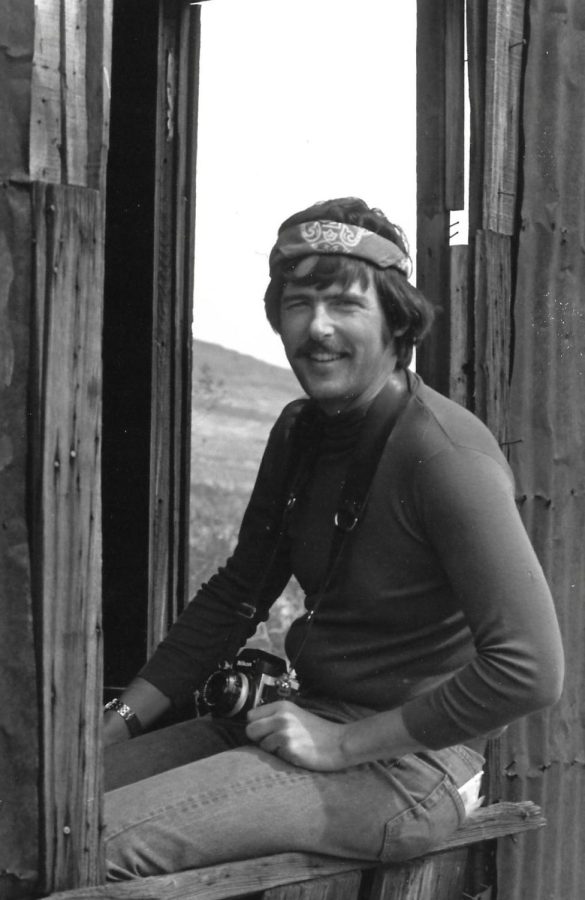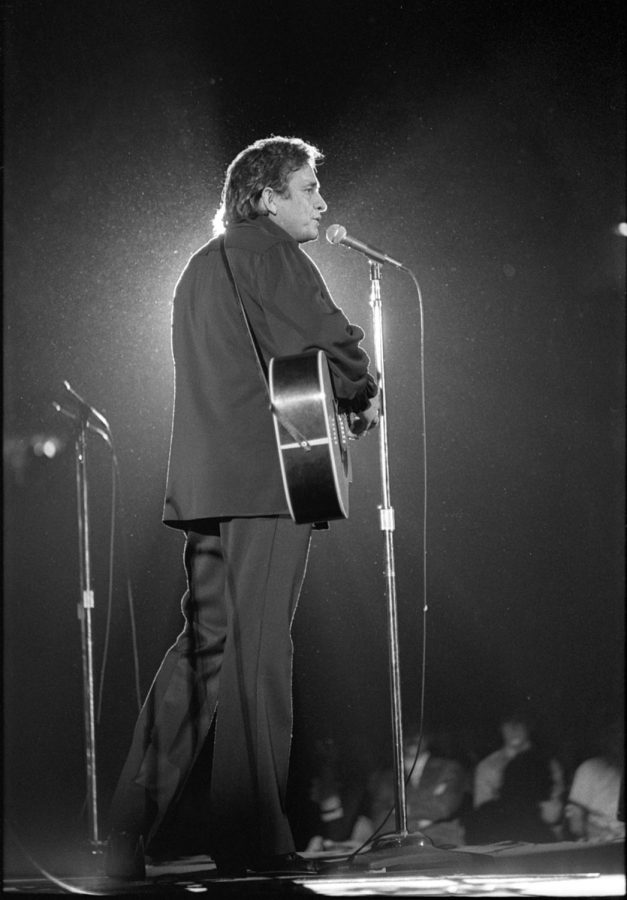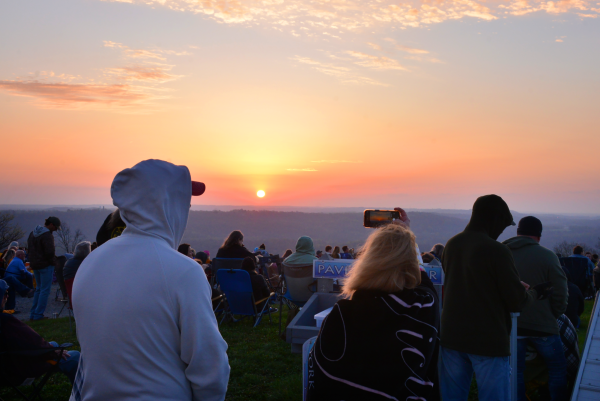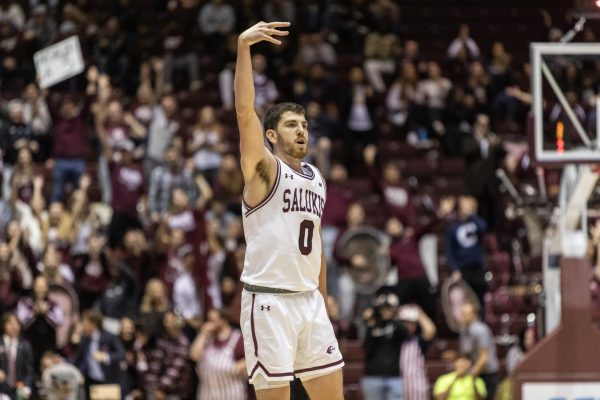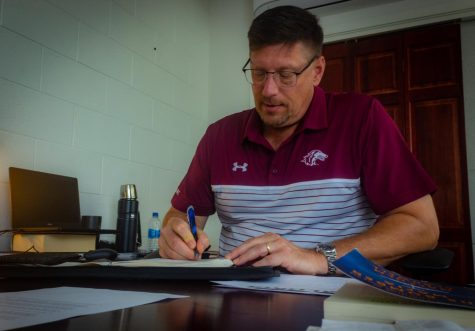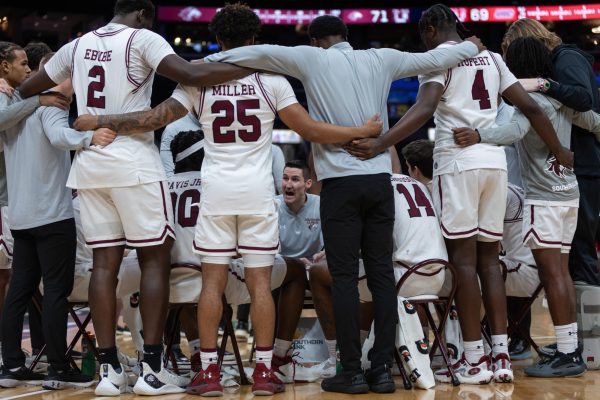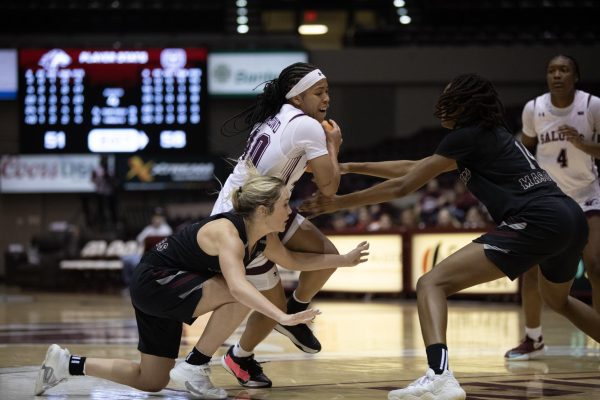Alum John T. Soden reveals unpublished works from the 70s during his time at SIU
photo provided by Sue P. Harkness Soden
John T. Soden in the late 1970s.
At the height of the era that promoted peace, love, sex and drugs in the 70s; in the midst of the effects of the draft and Vietnam War on the American people, John T. Soden was an SIU student looking to further his skills in photography.
Soden is based in Alto, New Mexico with his wife and business manager Sue P. Harkness Soden, running a photography and videography business called Weasel Productions of New Mexico. He recently returned to campus and shared stories of his photography experiences here, which ranged from shooting violent protests to getting up close and personal with world renowned musicians. From the spring of 1971 to the spring of 1973, Soden experienced SIUs vibrant and sometimes somber campus as a young man from New York.
“I came here in spring of 1971 on a recommendation from my photography teacher in Long Beach State College in California,” Soden said.
Advertisement
Soden said growing up in New York, moving to California and then eventually finishing his college career in the Southern Illinois region was a huge culture shock.
“This is a totally different place, you know, kind of flatland… But I’ll tell you, the campus was beautiful. It’s still beautiful. And I was glad I came here,” he said.
Soden said he attended SIU during its hippie era and fit right in with his peers. He made friends who shared his interests in the Communications Building which, to this day, remains a time capsule of the memories he created as a student.
“I went to the COMM building and downstairs in the basement they had the office of the student radio station, WSIU. I met my lifelong friend Bob Huntington, and Bob Huntington was sitting behind a desk and we just felt like we knew each other forever,” Soden said.
From there, Soden found both a close friend and an increased love for media arts. He involved himself in the radio department before finding a primary interest in photography and TV broadcasting. It was his encounter with Huntington that opened up the door for Soden to photograph concerts of notable acts at SIU including The Statler Brothers and Johnny Cash.
“My buddy Bob and I met the first day, we became roommates, and then best friends. One day he said ‘I got two backstage passes. I’m going to be doing the interview with Johnny and June Carter [Cash] and I got a pass for you.’ He shoved the rolls of triax at me and said, ‘Let’s do this!’,” Soden said.
Johnny Cash’s road manager gave Soden special access to shoot behind the speaker on the stage. Soden would go on to photograph notable music acts including The Tennessee Two, Carl Perkins, The Carter Sisters and Mother Maybelle Carter, who was giving one of her last concerts, holding a harp close to her ear as she was slowly going deaf.
Advertisement*
Despite Soden’s obvious talent he struggled to find a place at SIU that would publish his work.
“I started out as a photojournalism major and the teacher that I had at the time [. . .] took an immediate dislike to me [. . .] that’s when I switched to a broadcasting major,” Soden said.
Soden said one of his photography teachers from Long Beach State College, Doc Horrell, invited him to help photograph for a documentary the teacher was doing on the last of the coal mining industry in the Southern Illinois region.
Soden attributed a lot of his growth in photography and said he learned the art of making connections with the subjects of his photos during these sessions with Horrell.
“I would just follow him, he would talk out loud, and he would think out loud. And that’s how I learned photography, mostly from him. He was like a hunter going after his prey. I just followed him around and just learned from him. He would talk to me and tell me how to interview people and so on to put them at ease,” Soden said.
According to Soden, this experience influenced his photography with a journalistic flair in his future work. Though Soden enjoyed his time at SIU, meeting new people, enjoying the campus scenery and overall freeness of the 70s, the dark cloud of the draft hung over the heads of young men across campus. At the time, the U.S was in the midst of the Vietnam war.
“I was on a scholarship here. I also had a draft number of 33, which in the Vietnam era meant you were about two steps away from a rice paddy,” Soden said.
His main priority was ensuring he maintained the scholarship that was essentially preventing him from being drafted for the war, he said.
“I had a Class One A deferment, which meant you were in school full time,” Soden said. “As long as you stayed in school full time and didn’t flunk out or for some other reason stopped going to school, your deferments would carry you through your college career.”
Men who were not in university or left school for other circumstances were given about a month before they were drafted for the war, according to Soden. Soden said he gained his first photojournalism experience at SIU when he photographed a protest against the Vietnam War in 1971.
“It was about the invasion of Cambodia and that was the gist of the protests. But [another] part of the protests was the fact that you were 18 or 19, and you could be shipped off to war, but you couldn’t vote,” Soden said
Soden shows several photos of students marching through downtown Carbondale towards the East Campus Towers: Steagall, Mae Smith and Neely, which still stand tall today.
“I don’t remember what the chanting was, but it’s probably ‘1234 we don’t want your war’,” Soden said,
He photographed the events that transpired from a vantqage point at the very front of the protest, facing the marchers.
“I was in between the police and the students. We marched down Highway 51 until we got to a point where they herded us off to the right and eventually herded the students towards the big towers. And that’s when things got hairy,” Soden said.
Soden said he stayed in the middle of the action despite imminent danger because his goal was to capture the mood of the night.
“My father was a police officer and he always said if the police hold their batons sideways they’re going to push back a crowd, but if they police hold their batons sideways they’re going to bust some heads,” Soden said as he showed photos of the police lined up in front of the student.
The police officers eventually fired tear gas into the crowd and Soden continued to shoot until he could no longer see. After the protest the intensity across campus mounted.
“So I’d say it was a tense mood on campus. I’m sure word got out of how we were treated. So it was in a somber mood, or at least that’s how it hit me,” Soden said.
Soden said the effect wasn’t long lasting and the mood on campus soon returned to normal.
Despite being a diligent student, who wanted to maintain his grades, Soden still made the time to enjoy campus life along with us peers. In the 70s, the prescience of college life could be felt as students swarmed the streets.
“Boobies was a sandwich place, we used to go down there and hang out. There were a lot of pop up bands, and they’d be playing music and you know, there was a large population of students here, so the streets were a lot more crowded,” Soden said.
He reminisced about campus events like the annual cardboard boat race and the scenery including the lush trails surrounding SIU.
“I remember just walking around campus was like a mental break. You know, you go to class, and you’d be able to walk out on the paths, and it was like being in the forest,” Soden said.
Soden visited SIU with the same love he left it with so many years ago. He offered some advice for students moving forward in their academic and professional careers.
“Looking back at it, especially in photojournalism. It’s like [you should] do it while you are here. You’ll never have a better opportunity. There’s no pressure, the pressure is whatever you put on yourself. So try to do your best, because that’s going to help you in the real world later,” Soden said.
For more of John T. Soden’s work visit www.weaselvideoproductions.com
Editor-in-Chief Oreoluwa Ojewuyi can be reached at [email protected] or on twitter @odojewuyi.
To stay up to date with all your southern Illinois news, follow the Daily Egyptian on Facebook and Twitter.
Advertisement



